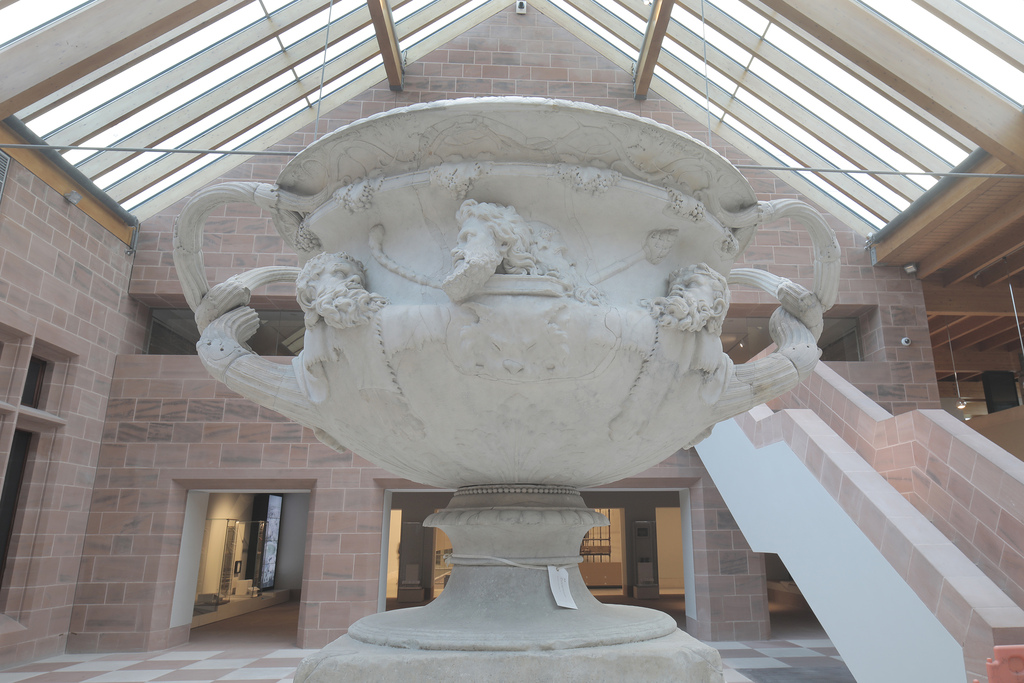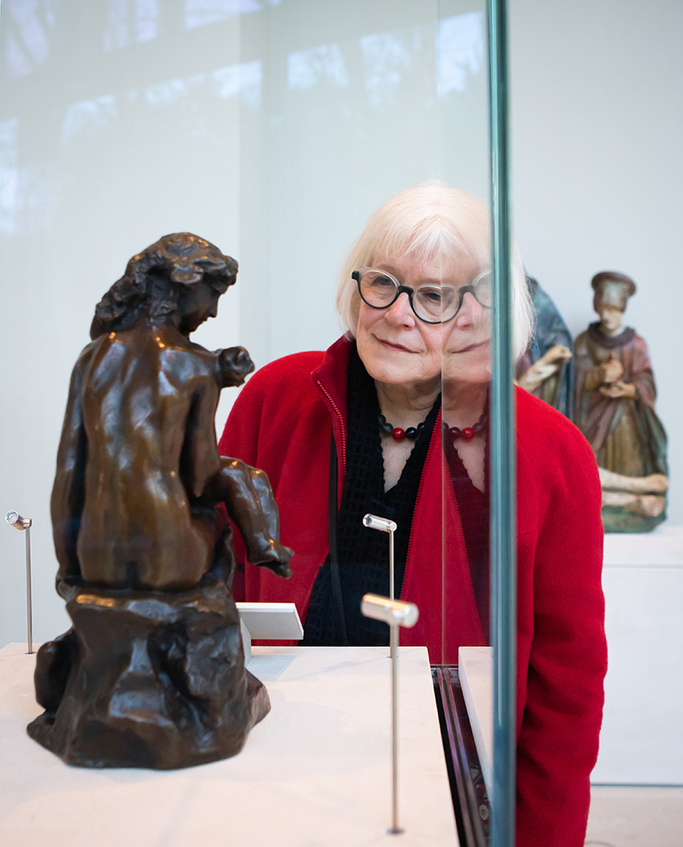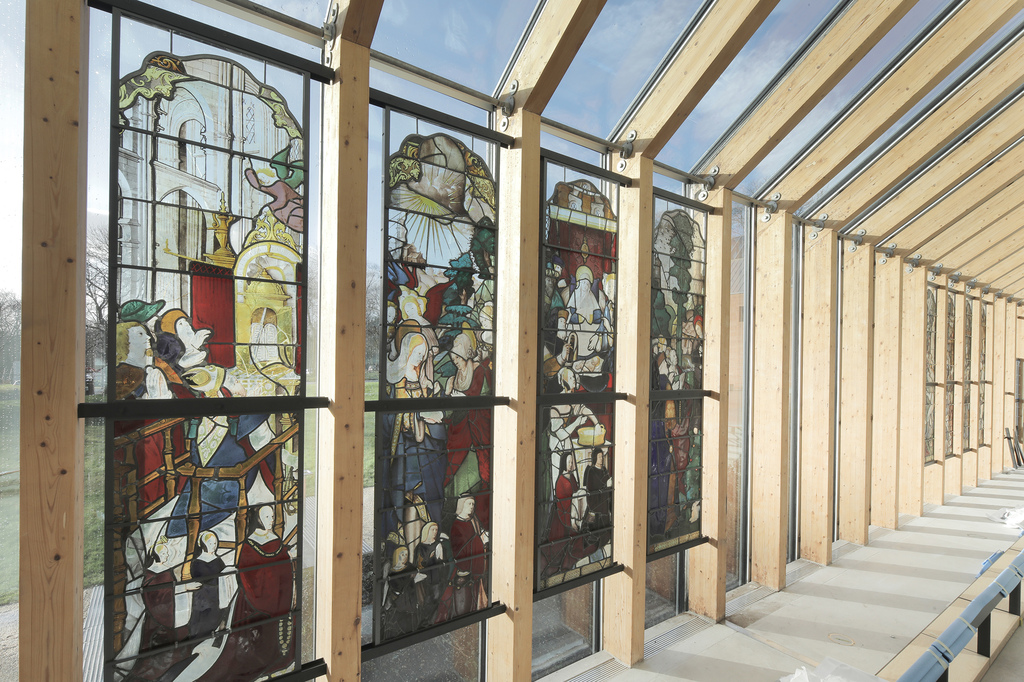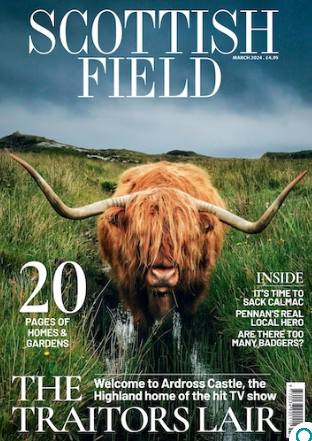Reopening date announced for The Burrell Collection in Glasgow following major refurbishment.
The Burrell Collection in Glasgow will reopen to the public on Tuesday 29 March after a major £68.25 million refurbishment.
Operated by the charity Glasgow Life, the A-listed home of The Burrell Collection in Pollok Country Park is now a modern, greener museum that will show more of the Collection to visitors and give access to over a third more of the building.
Sir William Burrell devoted more than 75 years of his life to amassing, along with his wife, Constance, Lady Burrell, one of the world’s greatest personal art collections, renowned for its quality of Chinese art, exquisite stained glass, intricate tapestries as well as its breadth of fine art.
The donation of the Collection to the city was described at the time as: ‘One of the greatest gifts ever made to any city in the world,’ by Sir Hector Hetherington, principal of Glasgow University.

Inside the Burrell Collection
The Collection is home to the Wagner garden carpet which is one of the earliest surviving Persian garden carpets in the world, and has rarely been on public display since the Burrell Collection first opened in 1983.
The museum’s refurbishment and redisplay means this priceless carpet will now be on permanent display, accompanied by new and innovative methods of interpretation.
Other highlights include Chinese pottery and porcelain produced over a 5,000-year period, making it one of the most significant collections of Chinese Art in Europe; paintings by renowned French artists including Manet, Cézanne and Degas; Medieval treasures including stained glass, arms and armour and over 200 tapestries and carpets, which are among the finest in the world.
Councillor Susan Aitken, leader of Glasgow City Council, said: ‘The Burrell Collection is a place where everyone is welcome to appreciate one of the greatest personal collections ever assembled, housed in one of Scotland’s favourite modern buildings. Its A-listed home has been repaired and upgraded, its environmental performance has been dramatically improved, new displays have been created and thousands of local people were consulted about what they wanted to see. Visitors will be able to see more of the collection, more of the building itself and spend more time in Pollok Country Park. We look forward to welcoming the world to enjoy this spectacular museum.’
Dr Bridget McConnell CBE, chief executive of Glasgow Life, said: ‘The re-opening of The Burrell Collection is another compelling reason for people to come to Glasgow to visit our spectacular city. It will be the catalyst for more people to experience the wonderful Pollok Country Park and other attractions on the south side of the city and to enjoy the glory of the Collection and its magnificent home. The Burrell Collection stands among the finest personal art collections ever amassed and will bring people back many times to see it in the years to come.’

Former Keeper of The Burrell Collection, Rosemary Watt, looks at Rodin’s ‘Brother and Sister’ cast in bronze
Professor Frances Fowle, senior trustee of Sir William Burrell’s Trust, said: ‘Reimagining The Burrell Collection has been an exciting and challenging undertaking, and the results have surpassed all our expectations. Works of art are now arranged across three floors of the elegant, newly-refurbished building, giving them room to breathe. Not only are many more items on display, those normally hidden from view will now be accessible via a state-of-the art open store.
‘Local and international visitors will be introduced to new and intriguing aspects of the Collection through its multi-media interpretation. There is a fascinating world of beauty and craftsmanship to be discovered when The Burrell Collection reopens.’
Sir Angus Grossart, chairman of The Burrell Renaissance said: ‘The Burrell Collection is one of the finest in the world. Visitors will soon be able to enjoy its enormous cultural diversity, great beauty and appreciate the scale of Sir William Burrell’s achievement. As a result, its global reputation and international reciprocal engagement will grow further, attracting new audiences to Glasgow to see it for themselves and to gain from the strong programme of international temporary exhibitions which we are planning.’
Nearly half of the funding for the £68.25 million project was committed by Glasgow City Council with more than a quarter coming from the National Lottery Heritage Fund, and significant donations fromThe Scottish Government, the UK Government, and from many generous trusts and private donors.
On reopening, the museum’s gallery space has increased by 35%, allowing important and unique objects from the Collection, which have not been seen for decades, or have never been on permanent display, to go on show.
New displays will give visitors a better understanding of the international significance of The Burrell Collection’s artworks and the people who made them and some of the people who have owned them. In total 225 displays will spread across 24 galleries. The displays include innovative digital elements such as video walls, interactives and hybrid systems created to help people engage with the stories behind the Collection.
A new central stairway will allow visitors access to the lower floor of The Burrell Collection for the first time, where they can watch items not on display being cared for. A new temporary exhibition space has also been created. Similarly, new alleries have been created on upper floors which will take visitors to spaces in the building they have never seen before.
New displays will give visitors a better understanding of the international significance of The Burrell Collection’s artworks, as well as the people who made them and some of the people who have owned them. The displays include innovative digital elements such as video walls, interactives and hybrid systems created to help people engage with the stories behind the Collection.
The museum’s environmental performance has been enhanced by greatly improving the building’s exterior through a new roof, glazing and cladding, and by replacing power, heating and lighting systems with more efficient and sustainable technologies.
The changes made to the fabric of the building to make it more air tight and water tight, and new glazing make it far less susceptible to changes in heat, and the upgrades of plant and systems means the building is far more efficient, and able to take advantage of new technologies in the future to lessen its impact further. The building has achieved industry standard BREEAM rating of ‘Excellent’ – a major achievement for a refurbishment.

Stained glass windows have been carefully restored
Since The Burrell Collection closed to the public in October 2016, a comprehensive consulation programme has engaged with more than 15,000 local people who have given their ideas, insights and opinions. This input has shaped every aspect of the redesign of the building, access to it and the development of the new displays, galleries and spaces within and around the museum.
The Scottish Parliament passed a bill in 2014 which would allow international loans of objects from and to The Burrell Collection. While it was closed, objects from the Collection were seen by more than a million people on loan to museums in New York, Paris, Japan and London.
As the world recovers from Covid-19, The Burrell is a reminder of culture’s contribution to the vibrancy and international appeal of Glasgow.
The opening of The Burrell Collection in 1983 was one of the first demonstrations of Glasgow’s commitment to cultural-led regeneration. By harnessing the power of its incredible cultural draw, Glasgow has positioned itself as one of the world’s great cultural and creative cities, making it a must-visit destination.
The Burrell Collection’s refurbishment will also bring new visitors to Glasgow’s south side and to Pollok Country Park to enjoy a full day out. Pollok Country Park is Glasgow’s largest green space and is home to Pollok House, Pollok Stables and Sawmill which will be redeveloped, spectacular gardens, woodside walks and play areas.
Paths and roads have been improved; benches, new signage, vehicle barriers restricting access along the main through route in the centre of the park have been installed, and electric vehicle chargers, electric shuttle bus stops, and NextBike bikes and e-bikes will prioritise active travel.
TAGS

